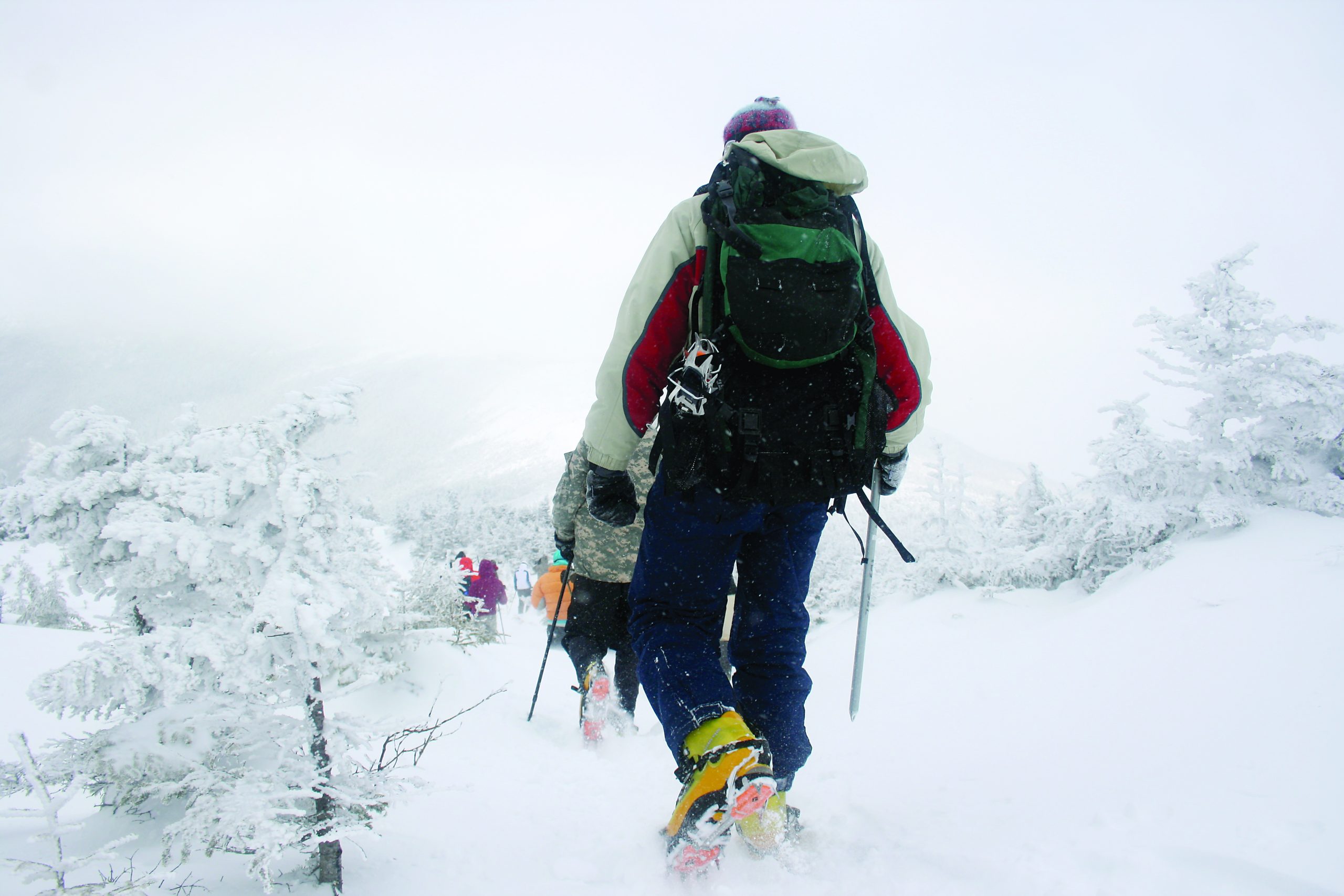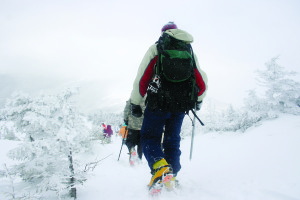
“The functional objective of this trip is to introduce students to the world of glaciated mountaineering. Basic mountain skills, such as walking with crampons, traveling on a rope team, and crevasse rescue will be covered,” he said. “Teamwork, planning and training will be stressed, along with the importance of self-care and personal responsibility.”

Photo courtesy of Carson Tortorige
Becker is sponsoring the trip with Carson Tortorige, coordinator of Georgia State’s Touch the Earth program.Touch the Earth is part of Georgia State’s Recreational Services and offers outdoor recreational activities including paddling, climbing and cycling, according to the program’s website. They also offer outdoor equipment rentals.
Becker, Tortorige and three trained guides from the American Alpine Institute (AAI) will lead the ascent of Mount Baker.
Funding and Applications
The cost to the trip is expected to be funded by Touch the Earth scholarships and donations made through Impact Georgia State, the same crowdfunding program that paid for the university’s marching band to play in 2014’s Macy’s Thanksgiving Day Parade in New York City.
Tortorige said Touch the Earth received approximately 55 applications from students wanting to climb Mount Baker with Becker. Only ten candidates will receive official invitations.
Before the journey students will be required to attend four local hiking training sessions, according to the program description.
Students will be expected to carry equipment, camp on snow and climb up to 5,000 feet in a single day.
Camping on snow
Becker said enjoying cold weather is essential to camping on mountain snow.
“In the weeks and months leading up to the Mount Baker trip Carson Tortorige and I will work with the participating students to prepare them for conditions we are likely to encounter,” he said. “It is possible that we’ll experience winter and summer within a 24 hour period, from blistering sunshine, or walking in the clouds, to snow and sleet that could force us to abandon our attempt at the summit of Mount Baker.”
Part II
Fire on the Mountain
Mount Baker is categorized as an active volcano. In 1975-76 new volcanic activity began in the Sherman Crater directly south of Mount Baker, introducing magma into the volcano and creating several steam vents, according to the U.S. Geological Survey (USGS).
“Although monitoring was increased as a result to the 1975-76 activity, much of it has been dismantled and monitoring at Mount Baker is now insufficient due to the threat that renewed activity would pose to nearby communities and regional infrastructure. Mount Baker is one of several Cascade volcanoes that are high priority to have their monitoring systems enhanced in the coming years,” according to the USGS website.
Mount Baker last erupted 6,700 years ago.
More mountains to climb
Becker said he has enjoyed has enjoyed hiking, backpacking and the mountains since high school but it was after a postdoctoral fellow at the University of Washington without summiting Mount Rainier, he vowed to one day return.
“Climbing Mount Rainier became a bucket list item for me, but as the years passed many more pressing or convenient priorities took precedence. Finally, in the fall of 2012 I decided that I needed to make time in my life to train for and climb Mount Rainier,” he said. “I was not getting any younger, and climbing a mountain like Rainier is more than a day hike. Reservations were made for a guided climb with Rainier Mountaineering, and I began training in earnest. My group was fortunate to experience ideal weather and climbing conditions, summiting Mount Rainier as planned, shortly after daybreak on the morning of July 8, 2013.”
Becker also said this year he has been ice climbing in New Hampshire and Colorado and has plans later this year to climb Oregon’s Mount Hood (11,250 feet) and to attend a two-week expedition skills seminar in Peru. The itinerary of the seminar in Peru includes climbs of Ishinca (18,143 feet), Urus (17,782 feet) and Copa (20,302 feet) in the Cordillera Blanca mountain range.
There are no official plans as of yet for a mountain climbing trip sanctioned by Georgia State for 2016 but Becker said it is being discussed.
“I am having conversations with friends and guides about a couple of climbs on my bucket list. The climbs of Mount Hood and in Peru will give me an idea of where best to focus my planning and training for 2016,” he said.
Becker also said he hopes this year’s trip will inspire the students attending.
“I hope that, at a minimum, every student will come away from this trip with the appreciation that they can attain big goals in life. Climbing mountains requires physical training, mental preparation, and the honing of specific skills,” he said.
